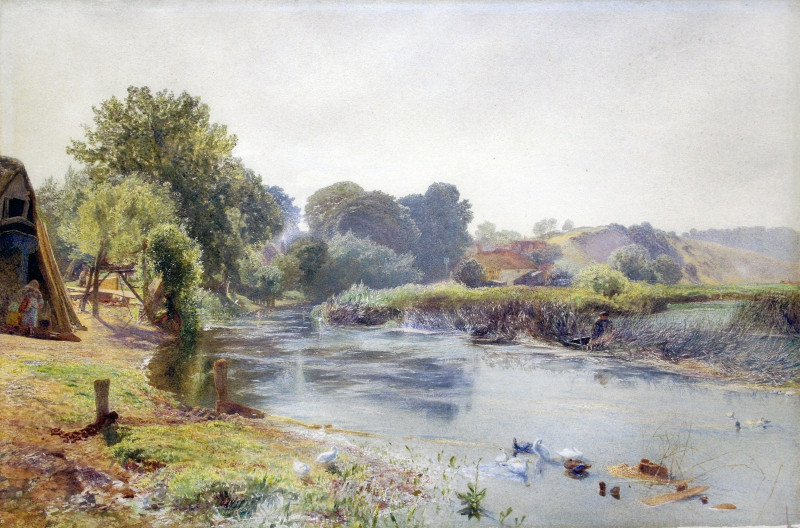
(click image to enlarge)
Described by a critic in The Athenaeum in 1873 as ‘one of the loveliest of Mr Hunt’s works’, this highly poetic image of the River Thames at Pangbourne was one of the first views that Alfred William Hunt produced of Southern England. In 1865, he had moved from Durham to London with his wife, Margaret, and their three daughters. Having become a full member of the Society of Painters in Water Colours in the previous year, he was now well placed to contribute to the reinvigoration of the watercolour landscape, along with, among others, his friend, George Price Boyce, who was then an associate of the society. Indeed, it was probably Boyce who introduced him to the attractions of Pangbourne in particular, and the Upper Thames Valley in general, as a sketching ground. Since 1863, Boyce had been using the village as an occasional base, taking a room in the old, three-storied cottage of the fisherman, John Champ, which sat close to the weir pool and the White Swan. Hunt probably took advantage of the ease of train travel from Paddington to Pangbourne, and may also have stayed at Champ’s cottage in 1868, when he produced a number of works in the area, including the present one, which were subsequently exhibited at the Society of Painters in Water Colours.